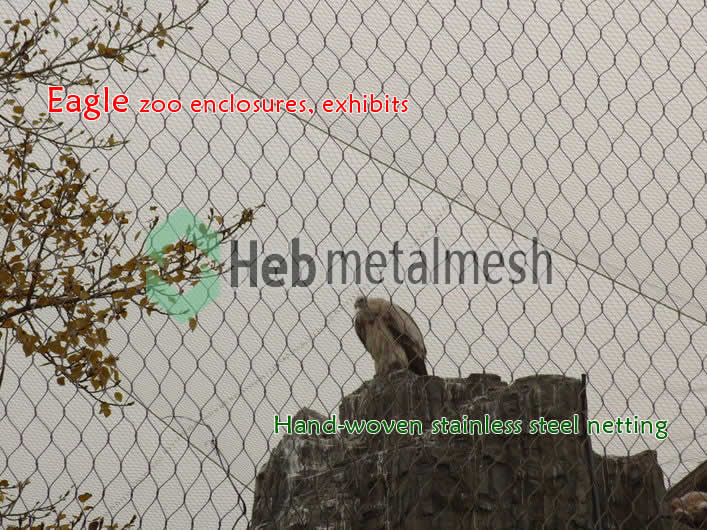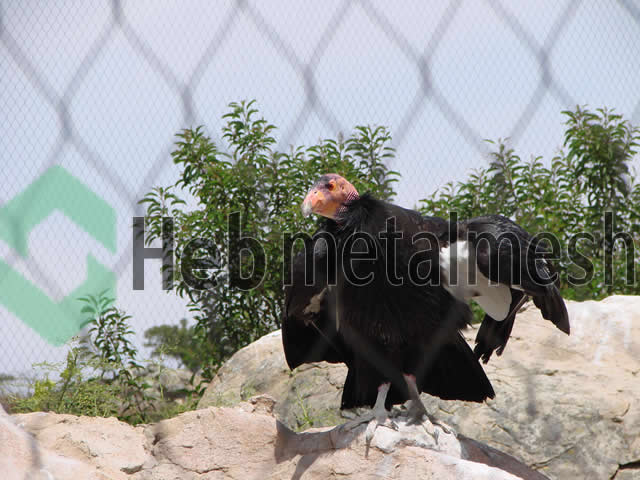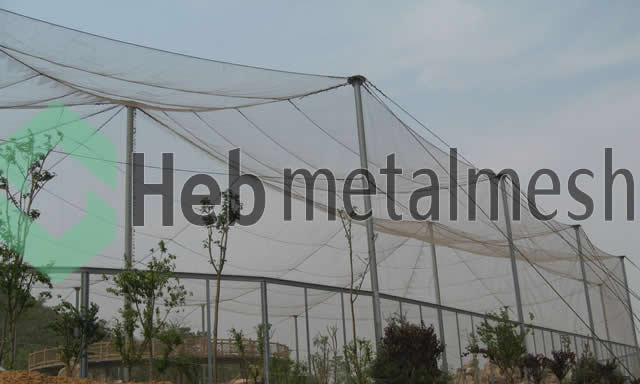Introduction to Hawk Fencing
Hawk fencing is a specialized type of barrier designed primarily to protect areas from the intrusion of birds of prey, such as hawks. This fencing solution serves multiple purposes, ranging from safeguarding small livestock, game birds, and gardens to preserving crops that could be at risk from these powerful predators. By implementing hawk fences, property owners can mitigate potential losses and protect their investments while ensuring a harmonious balance with nature.
The construction of an effective hawk fence involves selecting the appropriate materials that not only provide durability and strength but also create an environment that deters birds of prey. Typically, these fences are made from sturdy wire mesh or other materials that can withstand environmental elements while remaining easy to install. This ensures that the barrier functions without the need for continuous maintenance or repair, making it a cost-effective solution for long-term use.
In addition to physical protection, hawk fencing contributes to the overall management of wildlife in the area. By establishing clear boundaries, it aids in creating a controlled environment that reduces conflict between domestic species and wild predatory birds. This is particularly significant in agricultural settings, where the balance of the ecosystem relies on protecting crops while allowing natural wildlife to thrive. Property owners can feel more secure knowing that their lands are well-guarded against unwanted avian visitors.
As we further explore the various applications and recommendations for hawk fencing, it is important to recognize its role in promoting both safety and environmental stewardship. Properly installed hawk fences not only provide a barrier but also enhance the landscape by blending seamlessly into the surroundings. Understanding the benefits of such fencing can ultimately lead to informed decisions when it comes to securing specific areas from predation.
Understanding the Mechanics of Hawk Fencing
Hawk fencing serves a crucial role in the management of wildlife interactions, especially in agricultural and garden settings where birds of prey pose a significant threat to smaller animals or crops. The effectiveness of hawk fencing lies in its thoughtful design and the materials used to construct it. Typically, hawk fences are designed as tall barriers, often exceeding six feet in height, which discourages birds from landing or perching. This elevation is critical as many raptors are adept navigators and will avoid areas where they feel vulnerable to predation or human interference.
Various designs of hawk fencing exist, tailored for specific environments and applications. For instance, mesh or netting versions can be especially effective in gardens or orchards, where they act as a protective canopy without obstructing sunlight or rain that plants require. These netting systems are designed to allow air and moisture to pass through while simultaneously preventing the entry of birds of prey and similar wildlife.
Another popular option is solid panels or fencing built with materials like wood or vinyl. These structures not only provide a barrier against birds but can also enhance the aesthetic value of the property. The solid nature of these designs minimizes the likelihood of birds seeing through to potential prey on the other side, effectively deterring them from entering the area.
In addition to height and material, the configuration of hawk fencing can further improve its effectiveness. Slanted tops or angled configurations make it physically challenging for raptors to maintain their balance while attempting to perch. Furthermore, incorporating spikes or elements that disrupt the landing surfaces can prevent unwanted perching altogether.
Through these strategic designs and thoughtful implementations, hawk fencing effectively functions as a deterrent, safeguarding both gardens and livestock from airborne predators while coexisting within their natural habitats.
Ideal Applications for Hawk Fencing
Hawk fencing has become a crucial element in various settings, primarily due to its effectiveness in safeguarding vulnerable areas against predation by birds of prey. Farmers, gardeners, and conservationists have recognized the numerous benefits that these specialized fences offer. One of the primary applications of hawk fencing is on agricultural farms, where livestock, particularly small birds and baby animals, are at risk. By erecting hawk fences around protective enclosures, farmers can effectively minimize harm and enhance the overall health of their livestock.
In residential gardens, hawk fencing serves as a protective barrier for ornamental plants and smaller pets. Urban gardeners can greatly benefit from installing hawk fences, as these structures not only provide protection from predatory birds but also enhance privacy and aesthetic appeal. Gardens that are home to koi ponds or small water features particularly gain enhanced safety by employing this type of fencing, as it deters not just hawks but other wildlife that could potentially disrupt the ecosystem.
Public parks and recreational areas may also see advantages from the utilization of hawk fencing. In these environments, hawk fences can mitigate the impact of predatory species on local fauna, such as ground-nesting birds. Many parks have implemented these structures to create safe environments for wildlife, promoting biodiversity while also ensuring that park visitors can enjoy nature without disruption.
Finally, conservation areas benefit from hawk fencing through the protection of endangered species and ecosystem restoration. By reducing predation rates in these habitats, hawk fencing plays a vital role in maintaining the delicate balance of these environments. As awareness of wildlife conservation grows, the adoption of hawk fencing continues to rise, reflecting its importance across various sectors.
Recommended Wire Rope Mesh: 2″ x 2″ x 5/64″
The 2″ x 2″ x 5/64″ wire rope mesh stands out as an excellent choice for hawk fencing, showcasing a blend of versatility and strength essential for effective containment. This specification features openings sized at two inches square, providing a perfect balance between visibility and security. The choice of 5/64″ gauge wire contributes significantly to the mesh’s durability, as it is thick enough to withstand environmental stressors while maintaining flexibility. This construction helps prevent deformation or breakage, ensuring that the fencing remains intact even under challenging conditions.
One of the primary advantages of this wire rope mesh is its strength. The robust nature of the 5/64″ wire enhances the structural integrity, making it resilient against potential threats, whether from wildlife or weather conditions. Additionally, the mesh is designed to be corrosion-resistant, ensuring long-lasting performance without the risk of rust deterioration. This aspect is crucial for hawk fencing, as it often requires exposure to varied weather elements.
Ideal scenarios for employing a 2″ x 2″ x 5/64″ wire rope mesh include agricultural settings where protection from birds of prey is needed without obstructing visibility. The openness of the mesh allows for good airflow and sunlight penetration, fostering a healthy environment for plants and livestock while effectively deterring hawks from swooping down. Furthermore, this specification is also suitable for residential applications, providing a sleek and contemporary aesthetic while ensuring safety around gardens or pet areas.
Ultimately, the 2″ x 2″ x 5/64″ wire rope mesh is a reliable and effective option for hawk fencing, delivering a robust solution that meets various requirements, whether in agricultural or residential contexts. Its strong, durable nature ensures that it will serve its purpose for years to come, making it a recommended choice for those seeking to protect their property from avian predators.
Alternative Wire Rope Mesh: 2″ x 2″ x 3/32″
When considering options for hawk fencing, the 2″ x 2″ x 3/32″ wire rope mesh presents a viable alternative to the previously discussed options. This particular size and specification of wire mesh combines durability with versatility, making it suitable for a variety of applications. The mesh features a slightly wider spacing than some conventional options, which can be advantageous in certain settings, allowing for improved airflow and visibility while still providing adequate protection.
One key feature of this wire rope mesh is its construction. The 3/32″ diameter wire provides a robust structure that ensures longevity, helping to withstand weather fluctuations and environmental stresses. Additionally, the use of high-quality materials gives this mesh a resistance to corrosion, which is critical for outdoor applications where exposure to elements is a factor. This resistance, combined with its strength, positions the 2″ x 2″ x 3/32″ option as an effective choice for hawk fence installations that aim to protect gardens or livestock from avian predators.
In certain situations, the 2″ x 2″ spacing can be preferable over tighter configurations, particularly in environments where greater openness is desired. For instance, in wildlife reserves or properties intended for educational purposes, this mesh allows for optimal observation of animals within protected areas without compromising safety. Furthermore, its aesthetic appeal can complement natural landscapes, making it a popular choice for wildlife-friendly fencing solutions.
In summary, the 2″ x 2″ x 3/32″ wire rope mesh offers several advantages and is particularly suited for applications that require a balance of visibility, protection, and durability. Its specific benefits may cater to the unique needs of users who seek effective hawk fencing solutions tailored to their environmental context.
Installation Tips for Hawk Fencing
Installing a hawk fence requires careful planning and attention to detail to ensure a secure and effective barrier. First, it is essential to prepare the area where the fence will be installed. Clear the site of any debris, vegetation, or obstacles that may interfere with the installation process. Taking the time to assess the terrain will help determine the type of hawk fence that is most suitable for your needs, whether you are aiming for a decorative, functional, or protective fence.
Before starting the installation, gather the necessary tools and materials. Typically, you will need a post hole digger or auger, a level, measuring tape, and a hammer or mallet. Additionally, you should obtain high-quality fencing materials, including posts, hawk wire, and optional protective coatings or treatments for durability. If you are installing a larger hawk fence, having a helper can make the process smoother and more efficient.
When it comes to positioning the posts, ensure they are evenly spaced according to the manufacturer’s recommendations. A common distance is between 6 to 8 feet apart, but this can vary based on the height and type of hawk fence being installed. Once the posts are in place, it is crucial to use a level to confirm they are straight before securing them with concrete or gravel for added stability.
Next, install the hawk wire, ensuring it is taut and securely fastened to the posts. It is advisable to use tension wire at the bottom of the fence to provide additional support against ardent wildlife or environmental forces. Remember to check for any sagging or weak spots in the fence periodically, especially after initial installation or during severe weather conditions. Proper maintenance can extend the life of your hawk fence significantly.
Maintenance of Hawk Fencing
Regular maintenance of hawk fencing is crucial to ensure its longevity and continued effectiveness in protecting your property from birds of prey and other wildlife. Implementing a routine inspection schedule is the first step in maintaining your hawk fence. Inspect the fencing materials at least once every season, or more frequently if your area experiences severe weather conditions. During inspections, look for any signs of wear and tear, such as rust on metal components, gaps in the mesh, or loose posts. Promptly addressing these issues can prevent more significant problems down the line.
Cleaning is another essential aspect of maintaining hawk fencing. Dirt, debris, and organic matter can accumulate over time, potentially compromising the effectiveness of the mesh. Use a gentle scrub brush and a mixture of mild soap and water to clean the surfaces of the fencing. Avoid harsh chemicals that might damage the materials. After cleaning, rinse with water to remove any residue. Additionally, check for any vegetation growth around the fence line; trimming back bushes or trees can prevent wildlife from using them as perches to breach your fencing.
If repairs are needed, it is vital to use compatible materials to ensure the structural integrity of the hawk fence is upheld. For instance, if wire mesh sections are torn, consider replacing them with the same type and gauge of material. When reattaching loose components, ensure they are properly secured to withstand potential pressures from wildlife. Regularly tightening bolts and replacing damaged posts not only maintains the aesthetics of the fence but also contributes to its effectiveness.
In conclusion, proper maintenance of hawk fencing involves consistent inspections, careful cleaning, and timely repairs. By following these guidelines, property owners can greatly enhance the durability of their fencing solutions, ensuring they effectively deter unwanted wildlife interruptions for many years to come.
Regulatory Considerations for Hawk Fencing
The installation of hawk fencing entails several regulatory considerations that are crucial for ensuring compliance with local laws and environmental standards. Primarily, it is important for property owners to familiarize themselves with local zoning laws, which may dictate the specific types of fencing materials allowed, as well as their height and overall design. Each municipality may have unique regulations governing fencing, thus consulting with local authorities or a zoning board before commencing installation can prevent future disputes or penalties.
In most cases, a permit may be required before erecting hawk fencing. This permit process typically necessitates submitting plans that detail the design, dimensions, and location of the fence. It is advisable to investigate permit requirements in advance, as obtaining necessary approvals can sometimes be a time-consuming process. Failing to secure the appropriate permits could result in costly fines or mandated removal of the illegally-installed fence.
Additionally, environmental considerations should be taken into account when installing a hawk fence. These considerations include assessing the impact of the fence on local wildlife habitats, especially if the fence is erected in areas where sensitive ecosystems exist. Certain regions may have specific regulations to protect local fauna and flora, making it incumbent upon landowners to ensure that their hawk fencing complies with these laws. Collaborating with environmental consultants can provide insights into creating a solution that balances property protection with ecological stewardship.
Engaging with community boards or neighborhood associations may also yield valuable guidance, as these entities sometimes have additional regulations or recommendations pertaining to aesthetic consistency and community standards. To facilitate a smooth installation process, a thorough understanding of all regulatory frameworks surrounding hawk fencing is essential for property owners.
Conclusion
Throughout this guide, we have explored the practicality and benefits of implementing hawk fencing across various applications. Hawk fencing serves as a reliable and effective solution for protecting property, gardens, and livestock from predatory threats. Its robust design supports the preservation of local wildlife while ensuring that your plants and animals remain safe from potential harm.
One of the primary advantages of hawk fences is their durability and resilience. Constructed from high-quality materials, these fences offer long-lasting protection against not only hawks but also other avian predators. By opting for the appropriate wire mesh options tailored to your specific needs, you can enhance the protective measures around your property. Various fencing designs allow for customization, ensuring that the solution fits your unique context while maintaining an aesthetically pleasing appearance.
It is essential to evaluate your requirements when deciding to invest in hawk fencing. Assessing factors such as the type of property you possess, the level of avian threats in your area, and the desired aesthetic will influence your choice of fencing. Furthermore, considering the installation process and ongoing maintenance will ensure that your investment yields optimal results. By prioritizing these factors, you can establish a more secure environment for your plants and animals while promoting harmonious coexistence with nature.
In summary, the decision to invest in hawk fencing is not only a practical one but also a crucial step towards safeguarding your interests. By taking the time to analyze your specific circumstances and selecting the appropriate fencing options, you will create a safer haven that allows you to enjoy your property without the constant worry of potential predation by hawks and other birds of prey.


